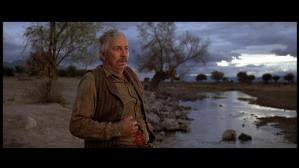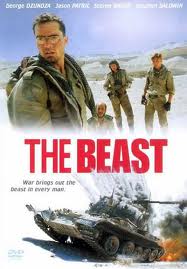The bookend scene is a common story telling device in literature to start a story at or near the climax and loop all the way back around again to the end. It certainly beats the heck out of the more traditional, and frequently pedestrian, beginning, middle and end narrative. It serves several purposes in that it keeps the reader off balance while plunging into the story and foreshadowing events to come. The term 'bookend scene' is often used interchangeably with 'framing scene' but the two, in my mind, are distinctly different. A bookend scene involves character(s) who are active participants within the story and is the identical twin (or nearly so) of itself at the beginning and end. A good cinematic example can be found in a film like Pulp Fiction where Ringo and Honey Bunny appear at the diner in both the opening and closing scenes in the same timeframe. Although the POV changes at the end, we are in the same place with the same characters at the same time as the opening. An example of a framing scene would be the old man with his family at the beginning and end of Saving Private Ryan. Framing scenes are much more expository, like prologues and epilogues and add little to the story (and in Ryan's case, actually detract from it).
While framing scenes are quite common in horror (it seems every slasher ever made has a prologue that ends with "20 years later..."), it's rare to find bookend scenes in the genre. Maybe because horror is such a linear type storytelling genre or maybe it's because the degree of difficulty in writing and editing bookended-type films is higher. In any case, here are two excellent examples of bookended horror - Thom Eberhardt's 1983 film, Sole Survivor and Tony Williams' 1984 film, Next of Kin.
The opening scene of Sole Survivor involves an all-but-empty metro bus trundling down the rain-soaked, downtown streets of an unnamed, southern California, San Fernando valley suburb. As the shot changes to the well-lit interior of the bus, we see a lone, attractive, but somewhat disheveled woman, pulling at her long sleeves in an attempt to cover the bloodstains on her hands. As she raises her right hand into view, we observe she is holding a gun...
This same scene shows up again in the last few minutes of the film and fits in so flawlessly, it's more like a feeling of deja vu than a recognition of a previously shown scene. The bookend scene figures in nicely with the whole can't-escape-destiny subtext of the movie. The director, writer and editor, Thom Eberhardt of Night of the Comet fame, doesn't talk about this film and I don't really get why. It's a decent, if modest, little horror gem with editing that is particularly good as the film initially jumps back and forth between characters, visions and dreams. The first several minutes may be confusing if casually watched, but the storytelling does make since and draws the viewer in.
Synopsis: After being the sole survivor of a plane crash, a young woman begins seeing strange people.
The principal characters in the movie are the heroine Dedee, an ad agency TV commercial producer played by Anita Skinner, and Karla, a clairvoyant, has-been, B-movie actress played by the film's co-producer Caren Larkey. Larkey, who is perfectly cast, looks and acts the part of the fading star to a tee especially when blowing takes on a fictitious infomercial. Her predicament reminded me a lot of the the psychic character Patricia Belcher played in Jeepers Creepers in that she knows exactly what is happening, and realizes no one will believe her, but feels the need to try and relate what's really going on even to the detriment of her career. Skinner, who looks a great deal like Chloe Sevigny's older, more well-adjusted sister, does a decent job as well in the lead role. The scenes between Skinner and Larkey are the best in the movie as they are easily the strongest actors and their characters are both written and directed with the most pathos.
Sole Survivor is often compared to Carnival of Souls and Final Destination. Thematically, this is true, but the story plays much differently than either of those films, mostly due to the clairvoyant character, Karla. She really added an element of melancholy-like fatalism that I really liked which made for an odd and interesting tone to the film. I was rather surprised at the ending, which does not sell out but is made a little less effective by an epilogue scene that should have been clipped. There's also a shoehorned strip poker scene starring Brinke Stevens' boobs that seemed wildly out of place and was probably inserted for marketing reasons. Also detracting from the movie were some dubious sets, like the morgue which looked exactly like an empty warehouse with some gurneys parked in it, and some very marginal acting from the lesser supporting players. The pacing is intentionally slow, with a ticking clock and dripping faucet shots to build tension and symbolize the inevitable. There are limited horror f/x as the film is much more about atmosphere. Overall though, the story and tone work well due to the superior editing and decent acting to make this one of the better 80's B-movies.
Score 7/10
At a roadside diner/petrol station, a tired, disheveled woman, stares off into the distance before getting into her truck with a young boy...
This opening bookend scene from Next of Kin is quite subtle, so much so, it can easily be missed when it comes around again near the end of the movie. It's also clever in that the voice over gives the false impression that this is just the beginning of the film. I first discovered this Tony Williams' sleeper while watching the Not Quite Hollywood Ozploitation documentary a couple of years ago. One of the scenes shown from Next of Kin in the documentary is a slow motion overhead of the heroine Linda running down a dark hallway.
It did not look to be the average 80's horror movie and, quite intrigued, I began searching out the film. I finally found a copy in a Dutch edition that was part of a going-out-of-business sale of an on-line retailer. The first time I watched the movie in its entirety, I was mesmerized by the hypnotic pace, smart, subtle storytelling and slam-bang ending. It is the rare type of film that constantly doles out important information, but in such a subdued, casual manner, that critical details can easily be overlooked. Everything that occurs in the very suspenseful and fast-paced final act is set up in a very leisurely-paced first hour. In order for the payoff to be satisfying for the viewer though, much attention needs to be paid to the information given up front in the initial set-up.
Synopsis: Linda, a young, pretty and soulful Australian woman returns after her mother's death to a retirement home previously owned and run by her mother and a partner. While there, she begins to suspect something's amiss as she's bothered by surreal dreams, childhood memories and disturbing journals written by her mother. As she reconnects with old friends such as retirement home resident Lance, diner owner Harry, his boy Nico and old beau Barney, Linda also begins unraveling a frightening mystery at her old home.
One of the things Williams and co-writer Michael Heath did extremely well in the film was to create believable small town characters with maximum efficiency to make them memorable enough to be reintroduced later on but not over stay their welcome. The young, precocious boy Nico, for example, hitches a ride to his dad's diner with Linda at the outset, and the viewer immediately and implicitly understands the nature of the relationship between the characters. Likewise, when old boyfriend Barney (played by Wolf Creek's, John Jarratt) shows up, the backstory between he and Linda can be pretty much sussed out by their current attitudes towards each other. The clever script is also rife with clues and red herrings concerning the story and even manages a little black humor along the way. Williams' direction is excellent as evidenced by many stylish shots which at times broach the surreal.
Williams' peppers the film with a few such disturbing shots and some jump scares that are anything but traditional. I got the distinct impression on a couple of occasions that he intentionally withheld a scare from a routine source to defy expectations (note the very uneventful shower scene). There is also a double jump scare involving a corpse and an old lady that still gets me every time. But it's the last 20 minutes of the film that pays off big time with murder, suspense, action, tension, sugar cube construction and ultimately resolution. Maybe it's because the first hour is so quiet and subdued by comparison, but the last act really delivers the goods.
Along with the outstanding writing and direction, comes a really nice understated performance by Jacki Kerin as Linda. The entire film is from her point of view so she has to carry most scenes and does an admirable job while showing a nice vulnerability to go along with her construction prowess. Also deserving of praise is an absolutely fantastic drum/synth composition from former Tangerine Dream member Klaus Shulze. The music is, in no small part, responsible for the unusual tone and atmosphere of the film and ranks as one of the best horror scores ever. I've watched this film no less than half a dozen times since obtaining and easily rate it in my top 20 horror favorites of all time.
Score 8.5/10





















































